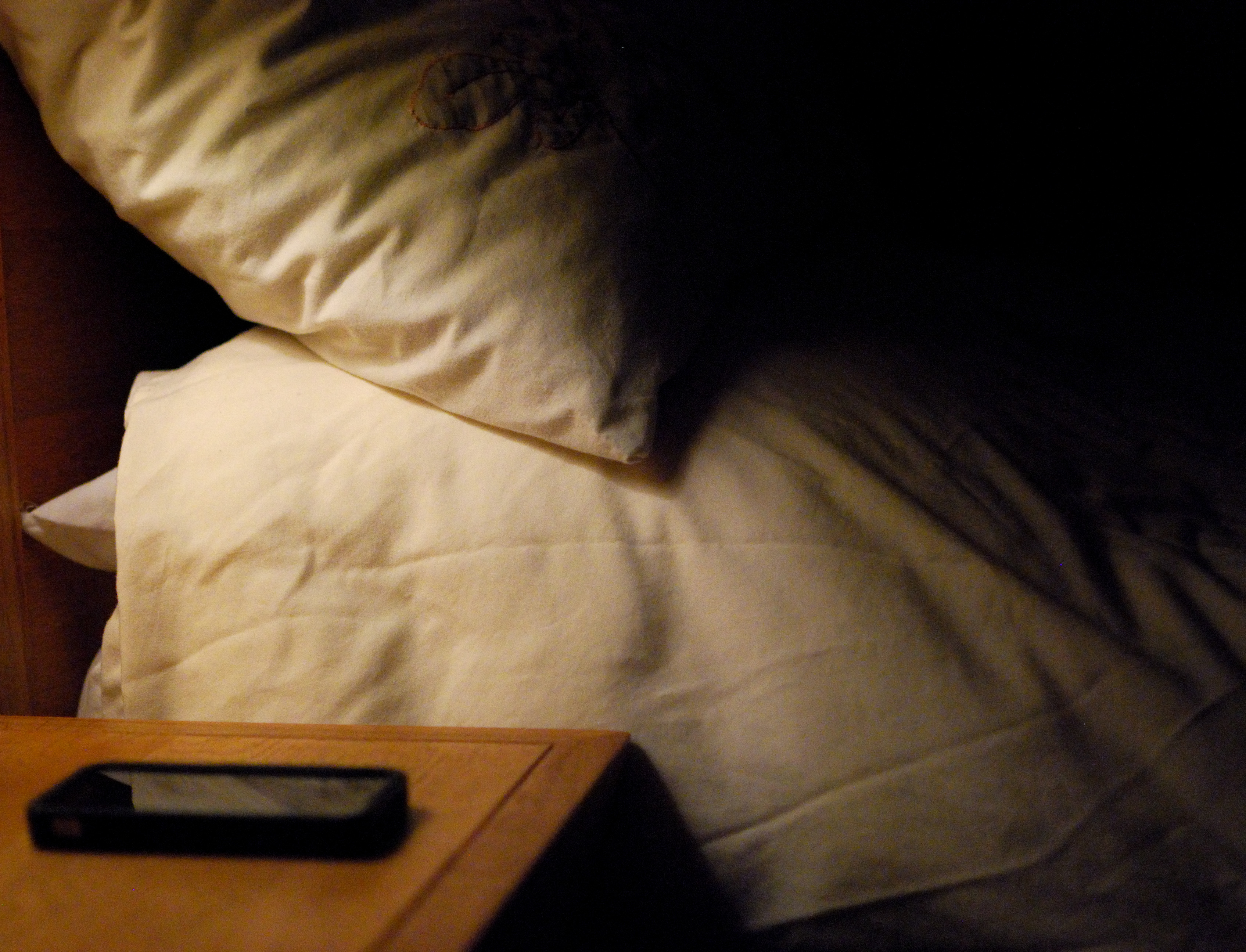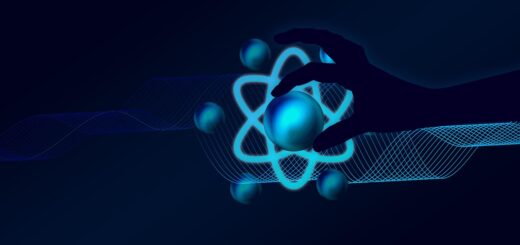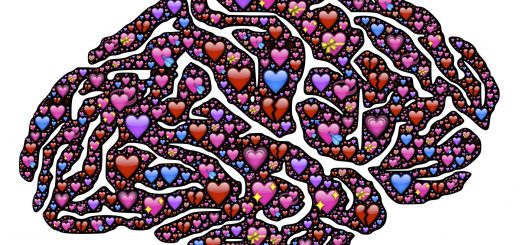Smartphones keeping us awake

Feeling tired? Your smartphone might be to blame. Smartphones have become increasingly popular in recent years and almost two thirds of university students now own a smartphone [1]. However, owning a smartphone may come at a cost for this already sleep deprived population [2].
Various studies have linked the use of computers, television, gaming consoles and mobile phones prior to sleep to insufficient and poor-quality sleep [3, 4]. Research on the effects of smartphones is new, but emerging studies suggests a link also between smartphone use and poor sleep. It was found that smartphone ownership was linked to more electronic media use in bed before sleep; especially calling, sending messages and spending time online compared to adolescents with a conventional mobile phone [5]. Smartphone ownership was also related to later bedtimes. Furthermore, researchers have found that among university students mobile phone use for playing games, surfing the Internet and texting was the most frequent technology-related activity in bed before going to sleep with three quarters of students engaging in it weekly [6]. It was also associated with insomnia and being a “night owl.” Besides, one study found that smartphone use for work after 9pm. reduced the amount and quality of sleep and increased depletion the next morning, and depletion in turn diminished daily work engagement [7]. There does not seem to be an age-specific effect as smartphone use is linked to poor sleep across in generations. Also, in a marketing study [8] two thirds of smartphone owners reported using their smartphone in the evening and 4 in 10 reported using it in bed. Bad news for them!
In addition, this behaviour certainly causes greater harm to the 10% of British adolescents that are estimated to have a mobile phone addiction characterized by excessive use and intermittent craving to use their mobile phones [9]. Researchers found that pathological mobile phone use was associated with insomnia and sleep disturbance, especially among female college students [10]. Furthermore, one study found that problem mobile phone use, addictive texting and pathological texting were related to poor sleep quality, but not related to sleep length [11]. Researchers have speculated that problem phone users may have developed a hyper vigilant attitude toward their mobile phone comparable to a mother immediately waking up when her baby cries. It may be that some people are so obsessed with their phones and not wanting to miss anything that they have become so vigilant that they do not enter deep sleep, which would lead to poor perceived sleep quality. Furthermore, Facebook addiction has been linked with delayed bedtimes, insomnia and poor quality sleep [12,13]. So, some of us can’t help but checking their phones to the extent that they have developed sleeping problems.
Various possible mechanisms for how smartphones may affect sleep have been identified. First of all, people may go to sleep later than intended because of mobile phone use. In one study, only about one-quarter of respondents reported that they never stayed awake later than a target bedtime in order to use their mobile phone [14]. Secondly, interactive technological devices, such as cell phones, computers and video game consoles are most strongly associated with unrefreshing sleep and difficulties falling asleep [15]. Researchers speculated that the cognitive and physiological arousal from using such devices may make it difficult to calm down in order to fall asleep. Also, frequent use of such interactive devices in bed may disrupt sleep by creating a learned-association between the bed and wakefulness [16]. Thirdly, light emitted from smartphone screens may suppress melatonin production and increase alertness thereby reducing sleep duration and disrupting sleep [17]. Indeed, studies have found that exposure to self-luminous tablets [18] and LED backlit computer screens [19] suppresses melatonin production. Lastly, mobile phones may disrupt sleep by waking us up in the middle of the night. In one study, half of of college students reported waking at night to answer text messages and 4 in 10 to answer phone calls, and that higher levels of technology use during sleep time predicted poorer sleep quality as students who used technology after sleep onset reported 46 minutes of disrupted sleep per week [20].
However, poor sleep may in fact lead to increased mobile phone use. One study found that sleep problems predicted longer time spent watching television and on social networking websites, but not vice versa, suggesting that media use does not cause sleeping problems, but instead, insomniacs appear to seek out media as a means of coping with their sleep problems [21].
Nonetheless, various studies have found a relationship between smartphone use and getting up on the wrong side of the bed. You may want to stay on the safe side and leave your smartphone a bit further away in the evening!
Specialist edited by Doug Young and copy edited by Charlie Stamenova.
References
[1] Dahlstrom, E., Walker, J. D., & Dziuban, C. ECAR study of undergraduate students and information technology, 2012. Boulder, CO: Educause Center for Applied Research.
[2] Lund HG, Reider BD, Whiting AB, Prichard JR. Sleep patterns and predictors of disturbed sleep in a large population of college students. J Adolesc Health, 2010; 46(2):124–132.
[3] Suganuma, N., Kikuchi, T., Yanagi, K., Yamamura, S., Morishima, H., Adachi, H., Kumano-Go, T., Mikami, A., Sugita, Y. and Takeda, M. Using electronic media before sleep can curtail sleep time and result in self-perceived insufficient sleep. Sleep and Biological Rhythms, 2007; 5: 204–214.
[4] Cain, N. and Gradisar, M. Electronic media use and sleep in school-aged children and adolescents: A review. Sleep Medicine, 2010; 11, 735–742
[5] Lemola, S., Perkinson-Gloor, N., Brand, S., Dewald-Kaufmann, J. F., & Grob, A. Adolescents’ electronic media use at night, sleep disturbance, and depressive symptoms in the smartphone age. Journal Of Youth And Adolescence, 2014; doi:10.1007/s10964-014-0176-x
[6] Fossum, I. N., Nordnes, L. T., Storemark, S. S., Bjorvatn, B., & Pallesen, S. The association between use of electronic media in bed before going to sleep and insomnia symptoms, daytime sleepiness, morningness, and chronotype. Behavioral sleep medicine, 2014; (ahead-of-print), 1-15.
[7] Lanaj, K., Johnson, R. E., & Barnes, C. M. Beginning the workday yet already depleted? Consequences of late-night smartphone use and sleep. Organizational Behavior And Human Decision Processes, 2014; 124(1), 11-23.
[8] Ericsson ConsumerLab. From apps to everyday situations. 2011. [Online]. Available at: http://www.ericsson.com/res/docs/2011/silicon_valley_brochure_letter.pdf. [Accessed 21st Novemeber 2014].
[9] Lopez-Fernandez, O., Honrubia-Serrano, L., Freixa-Blanxart, M., & Gibson, W. Prevalence of problematic mobile phone use in British adolescents. Cyberpsychology, Behavior, And Social Networking, 2014; 17(2), 91-98.
[10] Jenaro, C., Flores, N., Gómez-Vela, M., González-Gil, F., & Caballo, C. Problematic internet and cell-phone use: Psychological, behavioral, and health correlates. Addiction research & theory, 2007; 15(3), 309-320.
[11] White, A. G., Buboltz, W., & Igou, F. Mobile phone use and sleep quality and length in college students. International Journal of Humanities and Social Science, 2011; 1(18), 51-58.
[12] Koc, M., & Gulyagci, S. Facebook addiction among Turkish college students: the role of psychological health, demographic, and usage characteristics. Cyberpsychology, Behavior, and Social Networking, 2013; 16(4), 279-284.
[13] Wolniczak I, Cáceres-DelAguila JA, Palma-Ardiles G, Arroyo KJ, Solís-Visscher R, et al. (2013) Association between Facebook Dependence and Poor Sleep Quality: A Study in a Sample of Undergraduate Students in Peru. PLoS ONE, 2013; 8(3): e59087.
[14] Nathan, N., and Zeitzer, J. A survey study of the association between mobile phone use and daytime sleepiness in California high school students. BMC Public Health, 2013; 13, 840.
[15] Gradisar M, Wolfson AR, Harvey AG, Hale L, Rosenberg R and Czeisler CA. The sleep and technology use of Americans: findings from the National Sleep Foundation’s 2011 Sleep in America Poll. J Clin Sleep Med, 2013; 9(12):1291-1299.
[16] Gamble, A. L., D’Rozario, A. L., Bartlett, D. J., Williams, S., Bin, Y. S., Grunstein, R. R., & Marshall, N. S. Adolescent Sleep Patterns and Night-Time Technology Use: Results of the Australian Broadcasting Corporation’s Big Sleep Survey. PloS one, 2014; 9(11), e111700.
[17] Chang, A.-M., Santhi, N., Hilaire, M., Gronfier, C., Bradstreet, D., Duffy, J., Lockley, S., Kronauer, R. And Czeisler, C. Human responses to bright light of different durations. The Journal of Physiology, 2012; 590, 3103-3112.
[18] Wood, B., Rea, M., Plitnick, B., Figueiro, M. Light level and duration of exposure determine the impact of self-luminous tablets on melatonin suppression. Applied Ergonomics. [Online] 2012; Available from: http://dx.doi.org/10.1016/j.apergo.2012.07.008. [Accessed: 14th November 2014]
[19] Cajochen, C., Frey, S., Anders, D., Späti, J., Bues, M., Pross, A., … & Stefani, O. Evening exposure to a light-emitting diodes (LED)-backlit computer screen affects circadian physiology and cognitive performance. Journal of Applied Physiology, 2011; 110(5), 1432-1438.
[20] Adams, S. K., & Kisler, T. S. Sleep quality as a mediator between technology-related sleep quality, depression, and anxiety. Cyberpsychology, Behavior, and Social Networking, 2013; 16(1), 25-30.
[21] Tavernier, R. and Willoughby, T. Sleep problems: predictor or outcome of media use among emerging adults at university?. Journal of Sleep Research, 2014; 23: 389–396.










